Rank Species | Genus Copernicia Higher classification Copernicia | |
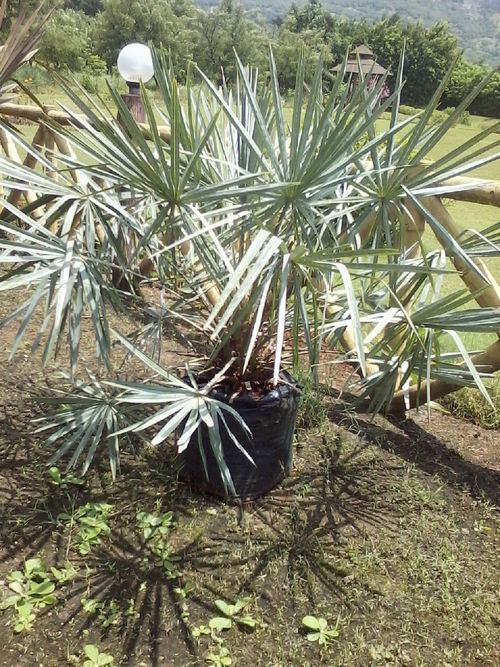 | ||
Similar Copernicia, Euphorbia antisyphilitica, Ricinus, Attalea speciosa, Palm trees | ||
Copernicia prunifera carnauba palm
Copernicia prunifera or the carnaúba palm or carnaubeira palm is a species of palm tree native to northeastern Brazil (mainly the states of Ceará, Piauí, Maranhão, Rio Grande do Norte and Bahia). Known by many as 'tree of life' because of its many uses, the Carnaúba is also the symbol tree of Ceará. The initiative to use it as a symbol vies to promote its conservation and sustainable use.
Contents
- Copernicia prunifera carnauba palm
- Plant description
- Uses
- Edible parts
- Carnauba wax
- Leaf fibers
- Wood
- Cultivation
- Harvest
- Economy
- References
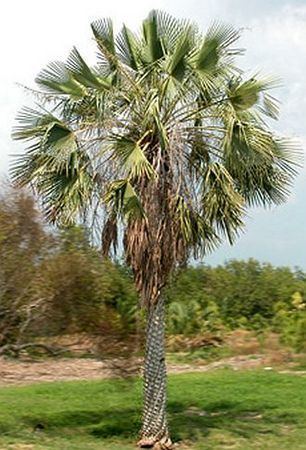
Plant description
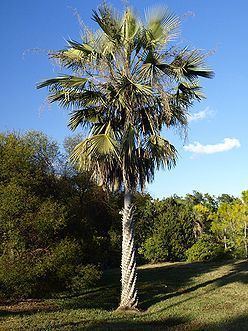
Copernica prunifera can grow up to 20 m height with an average 25 cm diameter trunk,circular tree crown, with fan-leaves measuring 1.5m, bisexual flowers and small black round fruits (2.5 cm). The palm can live up to 200 years. Although it withstands drought well, it has a high water requirement for growth. A slightly saline composition in the soil produces the best trees. Carnaubas are social palm trees, they are found in Carnaubais (assembly/group of Carnaubas) in flood zones or near rivers. Taxonomically, this tree belongs to the subfamily Coryphoideae, tribe Corypheae, subtribe Livistoninae.
Uses
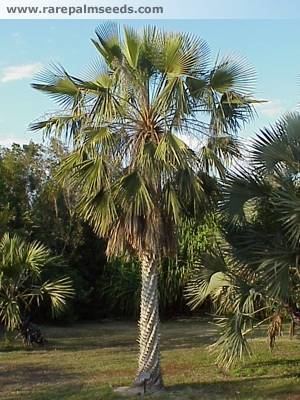
It is the source of carnauba wax, which is harvested as a natural coating from the surface of the leaves of the tree. The fruit and pith are eaten, the leaves are variously utilized and the wood is a construction material.
Edible parts
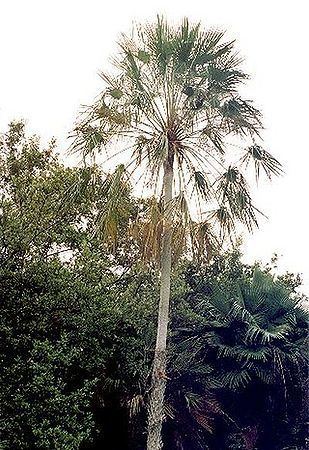
Carnauba produces several materials that have versatile applications. Its fruits can be used as feed to cattle, donkeys, goats and pigs or can also be used to produce jelly for human consumption. The pulp is extracted and dried to produce carnauba flour, largely consumed by natives. Cooking oil can be extracted from the seeds, which are also edible. When roasted, fruits are ground and brewed to replace coffee.
Carnauba wax
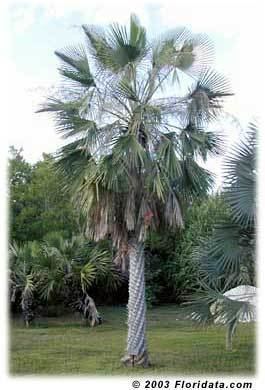
Nonetheless, the most important product of the Carnauba tree is its wax. Extracted from its leaves, the Carnauba wax can be used in floor, leather, furniture, car and shoe polish and enters into the manufacturer of carbon paper and candles – to raise the melting point, chalk, matches, soap and woodwork stains Carnauba wax consists of myricyl cerotate and small quantities of cerotic acid and myricyl alcohol. After harvesting, the leaves are left upon the field to dry under the sun. The thin layer of wax coating plant material disintegrates into a powder, which is then separated through beating and whisking the dried leaves. The powder is concentrated in a mortar, to be mixed with water and melted to produce liquid wax. After drying it is concentrated into chunks and sold.
Leaf fibers
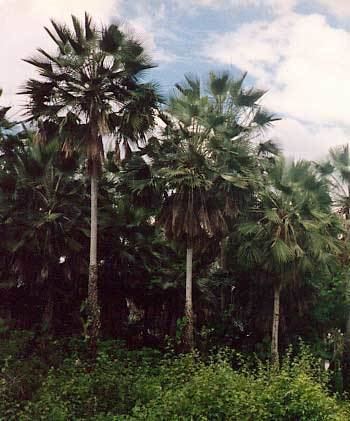
The leaf fibers are a byproduct of the wax production, known as "bagana". The biomass can be used as compost, soil coverage to maintain humidity, or compressed into biofuel briquettes with a high energy content for power generation. The leaf fibers, or "palha", are also woven in the manufacture of objects such as hats, baskets, bags and many others domestic products (Steinle and Johnson, 1935; Duke and duCellier). These handicraft products are beloved by tourists and represent an important source of income to the local population. The wax palm leaves can also be used in rustic roof making.
Wood

Due to the natural resistance against the most common wood pests, such as termites, Carnauba Wood is a valued local construction material. Although it is mainly used by people with low income, its function in beach tents – not only as central pillar/column/post, but also as the leaf roof – is very common.
Cultivation
It withstands drought well. A slightly saline composition in the soil produces the best trees.
Harvest
To produce wax, harvesting operations have to be employed during the dry season to assure complete drying of the leaves. The harvest is normally done from August to December. However, during periods of longer winters, the harvest may be delayed. A Carnuaba palm tree can produce up to 60 leaves per plant, especially after a very intense rainy season. Harvested with a long pole ending in a hooked blade (Figure 1), the top leaves are removed for superior wax content. To maintain sustainable production of Carnauba, cuttings are performed three times a year, in 80 day intervals from each tree. Production of Carnauba-derived materials dropped in the beginning of the 1970s, especially due to the invention of synthetic and petroleum products. Since then, the production has increased in the beginning of the 2000s and reached around 20,000 tons of powder and around 2,500 tons of wax, which has been sustained since then.
Economy
Carnauba economical activity includes the extraction and utilization of leaves, stem, tale and fibre, fruits and roots. These materials are all manufacturated into crafted and industrialized products. However, the powder used in wax production is the most profitable part of the plant due to great market interest. The production of Carnauba is mainly found in Northeastern Brazil, especially in the Rio Grande do Norte state (5%), Ceará state (35%) and in Piauí state (45%). Brazil is the only exporting country, and the main importers are Japan, United States and also Europe.
